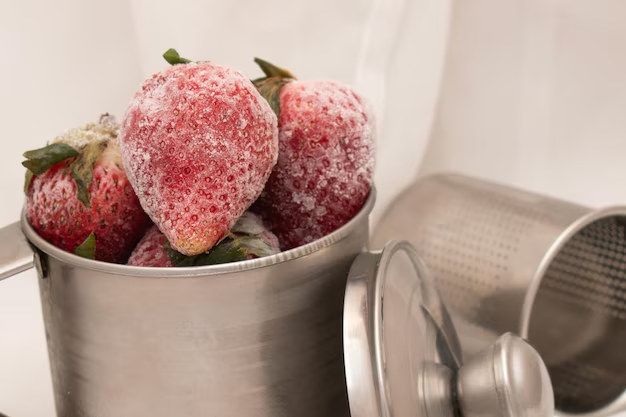How Long Does Jello Stay Fresh in the Refrigerator? Everything You Need to Know 🍮
Jello, a nostalgic treat loved by many, is known for its jiggly texture and vibrant colors. Whether it's served as a dessert or used in a creative culinary endeavor, questions often arise about its longevity once it's made. Understanding how long Jello can last in your refrigerator is essential for maintaining both its delicious nature and your peace of mind. Let's dive into the ins and outs of Jello storage, the factors affecting its shelf life, and the best practices to ensure it remains enjoyable each time you take a bite.
🕒 Factors Influencing Jello’s Shelf Life
Types of Jello and Their Variability
Packaged vs. Homemade:
Packaged Jello that you buy from the store often comes with preservatives that extend its shelf life. On the other hand, homemade Jello, crafted without these preservatives, tends to have a shorter lifespan. The difference stems from the ingredients and storage conditions.
Ingredients and Additives
Preservatives and Sugar Content:
Packaged Jello usually contains preservatives such as citric acid, which help inhibit the growth of mold and bacteria. Sugar also acts as a natural preservative. Homemade versions lacking these elements generally spoil quicker unless carefully managed.
Additional Ingredients:
When fruits, dairy products, or other additives are incorporated into Jello, they can influence how long it remains fresh. Some fruits, like pineapples or kiwi, contain enzymes that may break down the gelatin and need to be handled with care.
Optimal Storage Conditions for Jello 🍽️
Temperature Control
Refrigeration is Key:
Storage temperature plays a crucial role in extending the freshness of Jello. Keeping it refrigerated at or below 40°F (4°C) is critical for safety and longevity. Consistent refrigeration helps maintain the integrity of the gelatin and prevents bacterial growth.
Airtight Containers
Preventing Moisture and Odor:
Storing Jello in an airtight container minimizes exposure to external moisture and odors that can affect flavor and texture. A tightly sealed container also prevents the absorption of other flavors from surrounding foods in your fridge.
Covering the Jello
Plastic Wrap or Lids:
If using a bowl or a dish without a lid, covering it with plastic wrap adds another layer of protection against air exposure. This simple step can considerably impact the Jello's shelf life by preserving moisture and reducing contamination.
How Long Does Jello Last?
Packaged Jello Shelf Life
Once made, packaged Jello tends to last between 7 to 10 days in the refrigerator if stored properly. To extend its freshness, always ensure it's covered and maintained in a cool environment.
Homemade Jello Shelf Life
Without preservatives, homemade Jello typically lasts about 5 to 7 days in the refrigerator. The lifespan can be shortened or extended depending on the ingredients used, such as the inclusion of fruits or dairy.
📝 Quick Reference Table: Jello Shelf Life
| Type of Jello | Storage Method | Approximate Duration |
|---|---|---|
| Packaged | Airtight Container | 7-10 days |
| Homemade | Covered in Plastic Wrap | 5-7 days |
| With Fruits | Airtight Container | 2-5 days |
🚨 Red Flags: When to Discard Jello
While understanding typical duration is important, recognizing spoilage signs ensures you consume Jello safely. Be on the lookout for:
- Changes in Texture: Lack of firmness or signs of breaking down may indicate spoilage.
- Off-Odors: Any unusual or bad smell suggests it's time to part ways with your Jello.
- Mold Development: Regardless of type, visible mold is a definite sign to discard the batch.
Enhancing Jello’s Longevity
Use of Preservatives
Natural Alternatives:
For homemade Jello, consider using natural preservatives such as lemon juice or sugar to help extend its freshness. These can enhance both flavor and longevity without introducing artificial additives.
Importance of Storage Conditions
Consistent Refrigerator Settings:
Always aim to maintain a stable, cooler fridge temperature to prevent temperature fluctuations that can speed up spoilage. Keeping the Jello on a middle shelf can ensure it benefits from the fridge's optimal cooling zone.
Portion Control
Smaller Batches:
If you don't plan to consume Jello within its fresh period, consider making smaller batches. This practice prevents waste and ensures each serving is as fresh as possible.
Creative Uses to Maximize Jello Enjoyment
Incorporate Leftovers
Into Desserts and Drinks:
Leftover Jello can be a colorful addition to trifles, parfaits, or even drinks. Cut it into cubes or blend it into a smoothie for a fruity touch.
Freezing Jello
Can Jello Be Frozen?
While not conventional due to potential texture changes, you can freeze Jello for later use in a pinch. Once thawed, it may not regain its original texture but can serve well in smoothies or chilled dishes.
Making the Most of Your Jello Experience
Understanding how Jello interacts with various factors, from its ingredients to storage, empowers you to make smarter decisions regarding its use and storage. By employing these tips and tricks, you can enjoy the timeless delight of Jello without wasting a single serving or compromising on taste and texture. Whether you're crafting elaborate desserts or simply indulging in a nostalgic snack, these insights ensure that your Jello remains as fresh as your memories of it.
